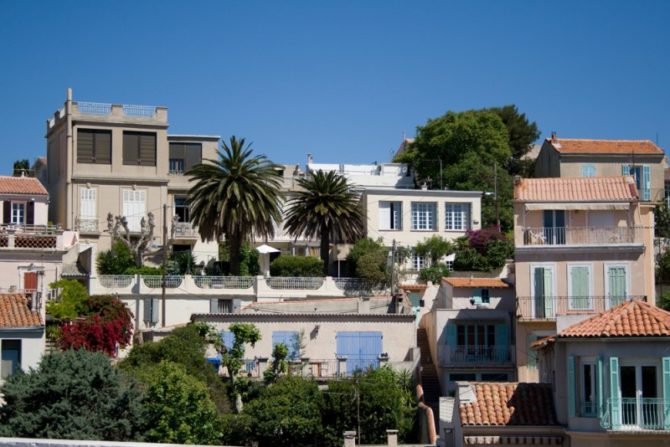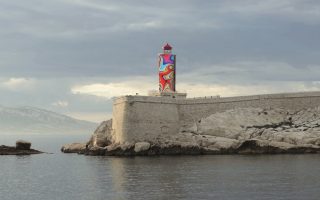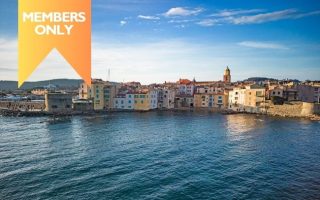Betting on Marseille

Situated on a spectacularly beautiful harbor on the Mediterranean coast, Marseille is France’s most important seaport, its second-largest city and the capital of the Provence-Côte d’Azur region, in the département of Bouches-du-Rhône. Founded by Greek traders around 600 BC, the city has a long, turbulent and colorful history, a wealth of cultural sites and important museums, a beautifully renovated tramway system, plenty of shops and services, and even sand beaches within the city limits.
But it can also be noisy, hot and at times hectic, and it has until recently suffered from a rather unsavory reputation as a devious and often dangerous place. It has struggled with high crime rates and problems associated with ethnic and racial tension, and its image was not helped by an unfavorable portrayal in the 1970s classic film The French Connection.
But a massive €3.5 billion redevelopment project called Euroméditerranée has changed all that. Financed by the national and local governments, the extensive regeneration program covering a total of some 1,185 acres is changing the face of Marseille and thrusting it into the global economic, cultural and business arena.
Launched in 1995 and scheduled to be completed by 2020, the project aims to propel the city into the same league as major European hotspots like Barcelona, and it has already gone a long way in markedly improving the quality of the city’s housing.
The core of the unique project is the complete transformation of a 775-acre area of the city, creating practically an entire new city inside the existing metropolis. New neighborhoods are being created, such as La Belle de Mai, which will be host to Europe’s largest multimedia precinct as well as thousands of new residential units.
Meanwhile, old districts are being given a complete overhaul. In the historic Joliette district, between the port and the city center, some 75 acres have been earmarked for new and restored offices and two hotels. In addition, 5,000 residential units are being created on a central urban artery, the rue de la République. Renowned architects Jean Nouvel, Zaha Hadid, Massimiliano Fuksas, Yves Lion and Rudy Ricciotti are all involved in Marseille’s metamorphosis.
Other adventurous and ambitious parts of the project include a Museum of European and Mediterranean Civilizations, the Regional Center for the Mediterranean, a leisure and shopping center called Les Terrasses du Port, a 2,200-seat auditorium and a convention center complex with a multiplex cinema designed by celebrated film director Luc Besson (Le Grand Bleu).
Eventually the sweeping Euroméditerranée project is expected to provide some five million square feet of office space and 12,000 residential units, not to mention the 20,000 jobs created to complete such a giant task. And along with such an influx of investment has come a certain evolution in style, with a new emphasis on high-end fashion boutiques, gourmet restaurants and chic bars. (See Marseille’s best new bistros, France Today Nov 2009, francetoday.com)
The Euroméditerranée program has also opened up endless opportunities for the Marseille property market. The area is now attracting a large number of house hunters, either looking for new homes because their businesses have relocated to Marseille, or because they want a second home close to what will become the French Mediterranean’s cultural hub. And of course some of the best new clients for the city’s real estate agents are property investors hoping to cash in on the booming buy-to-rent sector.
Prices compare favorably to other more tranquil locations in the south of France, like the glitzy Côte d’Azur and celebrity-studded Saint-Tropez, but they are by no means cheap. Recent figures released by FNAIM, France’s professional body of real estate agents, show that the average cost for property in Marseille is €3,035 per square meter (nearly 11 square feet), in line with average prices in Lyon and Toulouse, but well under prices in Paris.
A report from World of Property put the price tag for houses in Marseille’s city center even higher, at around €3,230 per square meter, with apartments slightly less at around €2,849 per square meter. The report also stated that “city center property developments are being sold as quickly as they are emerging”, commanding prices of between €154,500 and €250,300 per unit.
However, there are no signs that above-average prices are putting buyers off. Alistair Lockhart, sales and marketing manager at The French Property Agents, named Marseille as his top tip for 2010. “Marseilles will see much regeneration work in the next few years, especially round the harbor area,” he notes. “This is definitely an area for the buyer, particularly the Haussmann apartments,” he adds, referring to prestigious buildings in the style of Baron Georges-Eugène Haussmann, famed for redesigning central Paris in the mid-19th century.
Christophe Falbo, of the prominent French real estate agency Emile Garcin, agrees, saying that 2010 is going to be the year of Marseille. “We had a difficult year last year, with some readjustment of prices, but now we are seeing them stabilize, and there is a large amount of interest in the area.”
“The gross percentage of buyers is first-time buyers, and many of them are from the Marseille area,” he says. “But because of the city’s evolving cultural, business and tourism sectors, we are seeing a growing number of buyers from Paris and from other counties, predominantly from England but also from Belgium and America.”
Flabo adds that, because of the city’s excellent transport links—Marseille’s international airport, plus the TGV high-speed train which now goes direct from Marseille to Paris in just over three hours—a lot of buyers were looking for a second home to escape to on weekends and holidays.
“We are getting an increasing number of actors, journalists and sportsmen looking for places by the sea,” he notes. “The most sought-after areas are near the seafront, and in the apartment buildings around the Old Port. Prices there are between €5,000-€6,000 per square meter.”
The rental market is particularly strong in Marseille because of the city’s large student population and the growing number of companies that are opening offices in the area. One such employer that has moved into the area is the international property development and investment company Hammerson, based in London, which has recently bought a 52,000-square-meter (nearly 600,000-square-foot) commercial site called Les Terrasses du Port. The project is currently only at the development stage, but when completed will consist of 150 stores.
According to David Atkins, chief executive of Hammerson, “Les Terrasses du Port is one of the largest retail development projects in France, and an important element in the ongoing regeneration of Marseille. When it is completed, it will represent the largest concentration of retail shops in the center of Marseille, a dynamic city with a growing population.”
Whether you’re buying to live in or to rent, one thing seems to be clear—right now Marseille is a very good bet indeed.
Originally published in the May 2010 issue of France Today
Share to: Facebook Twitter LinkedIn Email
Leave a reply
Your email address will not be published. Required fields are marked *



